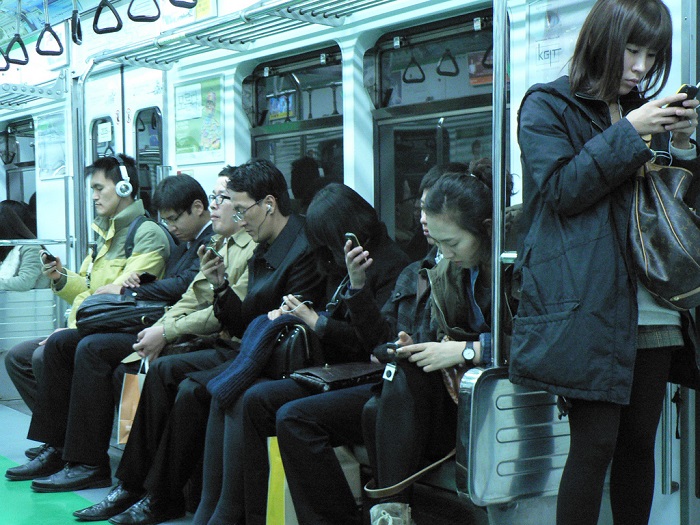Even though we all know of the damage we’re doing to our eyes by staring at our computers and mobile devices all day, a good majority of people are willing to turn a blind eye (or two) towards these facts in favor of instant, on-the-go entertainment.

The main cause of concern has to do with a blue light that is emitted by the screens of these devices, which has proven to harm the retina and also cause interrupted sleep. Some studies on the matter have been conducted, but a few crafty companies have figured out how to turn what could be a crisis point into a creative new messaging platform.
Introducing: safe screens, or screens that won’t damage your eyes if you stare at them for prolonged periods of time.
At Germany’s IFA show, Dutch company Philips showcased its new technology for computer screens called “SoftBlue” which is being sold on the fact that it is gentler on the retina.
“We are shifting the harmful blue light frequencies, which are below 450 nanometers, to above 460 nanometers,” said Philips' marketing director Stefan Sommer.
Other companies jumping on the safe screen bandwagon include Asus, BenQ, and ViewSonic.
“We’ve been told from a very early age by parents that too much screen time, in front of a TV or a computer, is bad. So a ‘safe’ screen might resonate with customers,” said Paul Gray, an analyst at IHS Global Insight.
Serge Picaud, a researcher at the Institute of Sight in Paris, conducted a study in 2013 in which he exposed sample retina cells from a pig to different wavelengths of light; the report he published showed that cells were killed off when exposed to light wavelengths between 415 and 455 nanometers (hence Philips targeting 460+ nanometer wavelengths). Light wavelengths within this range are considered deep blue light, which is close to ultra-violet light.
With the advent of more safely lit displays and screens, it doesn’t mean consumers everywhere can stare at their devices until their hearts are content. Ophthalmologist Vincent Gualino says we’d be best served to better monitor our interaction with them.
“The real problem is over-consumption,” explains Gualino, who specializes in retina illness. He points out children’s eyes are most vulnerable, what with their retinas being clear, and the fact that they will be exposed to these screens over course of four to five and in some cases six decades. Early monitoring can lead to better behavior down the road.
For those still concerned about this problem, there are special glasses that users can wear which filter out the blue light. They’re widely available in Japan, though a bit harder to find in the Western World.
Via Phys.org
Advertisement
Learn more about Electronic Products Magazine





